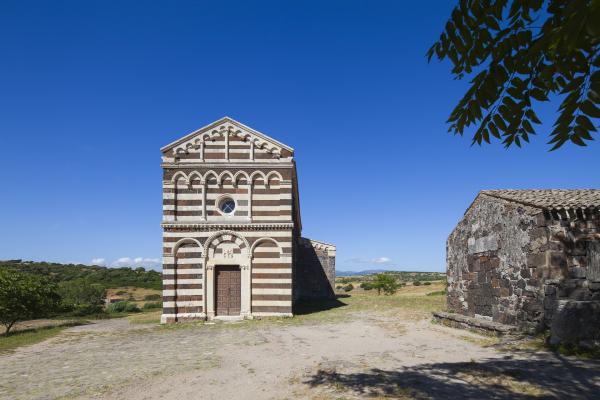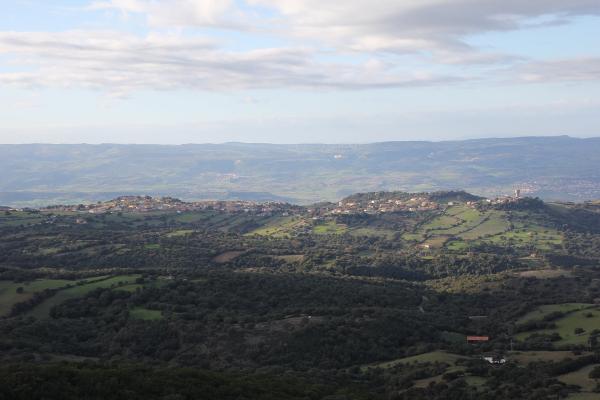It stands in the heart of Anglona, in a fertile territory that was one of the first on the island to be inhabited, with traces of human habitation dating back to as early as the Lower Palaeolithic. Perfugas is a Medieval town of 2400 inhabitants located 30 kilometres from Castelsardo and 50 from Sassari. First part of the Giudicato di Torres, it was later purchased by the Doria family. Its name derives from the Latin perfugae, meaning ‘fugitives’, a reference to the Balari, who resided here. The Coghinas River, into which various tributaries merge, flows in the west of the territory, marking the border with Gallura. Once a lake, today, the waters are uncovering the remains of a petrified forest formed between 30 and 15 million years ago. Along the Battana stream evidence of a settlement dated to 150 to 500 thousand years ago have been found. Neolithic sites in the area are countless: stone circles of Concas, Su Lione dolmen and Domus de Janas of Ariete (in Su Solianu), of Niedda and of Funtana Pulida. In 2000 BC, the area contained about 50 Nuragic settlements that left behind proto-Nuraghe, single-towered and complex nuraghes, villages and Giant’s Tombs.
However, the most fascinating site is in the town’s historical centre: the Perdio Canopoli, a well temple of limestone blocks dated to between the end of the Middle Bronze and the Iron ages. Well preserved, its paved vestibule, stairway, well chamber and roofing can still be seen. The adjacent area was closed off by an enclosure constructed over the remains of an in antis temple. Traces of a village can be seen all around. Ex-voto have been found in the well, including an elegant bronze sculpture. Some of the artefacts are on display at the Archaeologic-Palaeobotanical Civic Museum along with fossils and artefacts spanning from the Palaeolithic to the Medieval period, including a 4th century BC statue of the ‘Mother Goddess with a Child’. The well temple is situated in front of the Parish of Santa Maria degli Angeli, constructed following a basilical layout at the beginning of the 17th century (and reworked several times), although it is said to date back to the Doria fiefdom (14th century). The chapel now houses a small Museum of Diocesan Sacred Art, where the exceptional retable of San Giorgio, the largest in Sardinia, composed of 54 panes arranged in 14 separate altar pieces and set in frames bathed in gold, serves as a backdrop. It was painted at the end of the 16th century by an anonymous artist (the Maestro of Perfugas) and depict the Mysteries of the Rosary, the life of Christ, and scenes from the lives of saints Giorgio and Gavino. It is accompanied by two unique pieces: a statue of a saint on horseback and the ‘freed maiden’. The museum also boasts prized polychromed wood carvings, such as a 14th century Madonna, silver and gold pieces, including a reliquary cross and a 16th century crucifix. Among the documents in the archives, two parchments recording the consecration (1120) and re-consecration (1329) of the Church of Santa Vittoria de Su Sassu are of note. The latter is the oldest such Sardinian document. Books of the sacristy attest that by the 17th century, the Church of Santa Maria degli Angeli was already the Parish, taking over from the Romanesque Church of Santa Maria de Foras, built in the 1160 in the town’s present-day outskirts. Once, the large retable was housed in its ‘home’, the Church of San Giorgio Martire, that stands in a scenic spot in front of a nuraghe. Built with red volcanic rocks in the beginning of the 16th century following the Catalan Gothic style, it was called the Church of San Giorgio de Ledda until the 19th century, after the Catalan patron saint Sant Jordi de Lydda, whose feast day is celebrated in late April.



















